Health group joins majority of Pinoys in favor of food warning labels for PH as seen in SWS survey results
July 18, 2024
HPA AND CSO PARTNERS’ POSITION PAPER ON THE PROPOSED PHILIPPINE NUTRIENT PROFILE MODEL
September 5, 2024The Healthy Philippines Alliance (HPA), a network of organizations fighting to prevent and control noncommunicable diseases (NCDs), together with its partners, Social Watch Philippines (SWP) and the Child Rights Network (CRN), strongly supports the National Nutrition Council (NNC) in its initiative to develop a Philippine Nutrient Profile Model patterned after the Pan American Health Organization (PAHO) Model, which is based on the World Health Organization (WHO)
standards.
The Philippine Nutrient Profile Model is close to its final approval following the recently held public consultations last May where the HPA, SWP and CRN manifested its position to strictly align our nutrient profiling with PAHO and the WHO.
“The Alliance lauds the NNC for proposing to adopt a Philippine Nutrient Profile Model which includes the salient features of the PAHO Model that is considered global best practice. When this is successfully implemented in the country soon, we will be setting a standard in the ASEAN region for food regulation. We want to ensure that the government performs its duty to prioritize public health and uphold the right to health of Filipinos,” said Dr. Jaime Galvez Tan, convenor of the HPA and Board Member of HealthJustice.

Hence, the HPA and its partners alerted other groups to be keen watchdogs so that the NNC adopts a strong Philippine Nutrient Profile Model free from conflict of interest or any undue influence from the food and beverage industry. The food and beverage industry is expected to pressure policymakers just as they have in other countries.
“We congratulate the NNC for working hard to take on a robust Philippine Nutrient Profile Model. We expect the NNC to stand its ground against any attempt by the industry to interfere, delay, oppose, weaken or water-down any of the features or principles of the Philippine Nutrient Profile Model that will render it less effective. We also call on civil society, the medical community, academe, patient groups and other health advocates to proactively monitor the passage of the Philippine Nutrient Profile Model which is crucial to help us in our battle to curb NCD prevalence in the country,” added Dr. Ma. Victoria Raquiza, co-convenor of Social Watch Philippines.
The HPA emphasized, the Philippine Nutrient Profile Model is a major policy tool to effectively reduce NCD prevalence. It will provide a science-based mechanism to define the limits of critical nutrients or ingredients specifically sugar, non-sugar sweeteners, sodium, total fats, saturated fats, and trans fats, contained in processed and ultra-processed food and beverage products—the excessive consumption of which are linked to obesity and NCDs like diabetes, cancer, heart and kidney disease.
Moreover, the Philippine Nutrient Profile Model will be a vital tool and basis for other food regulatory policies, like food marketing, taxation, reformulation and imposing front-of-package warning labels or food warning labels. Food warning labels that will warn against unhealthy foods and drinks with high amounts sugar, sodium, or fats harmful to health, and thus promote healthier diets among Filipinos, especially children.
According to UNICEF, about 4 in 10 Filipino adults are overweight and obese. If this remains unaddressed, it is feared the numbers may continue to rise where more than 30% of Filipino adolescents are projected to be overweight and obese by 2030.
Contact Person :
Patricia Loren M. Reyes
Communications Officer
HealthJustice
Healthy Philippines Alliance
+639760085498
plamangune@gmail.com





